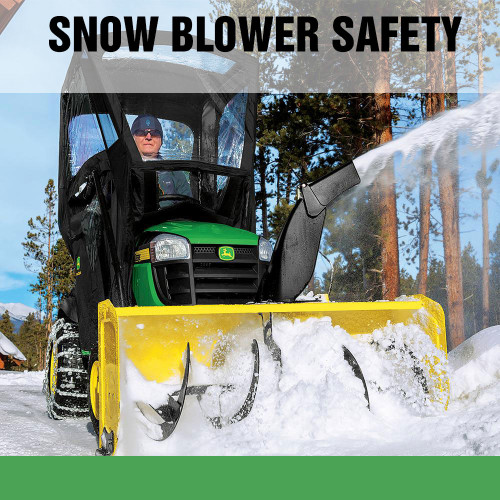The U.S. Consumer Product Safety Commission estimates that each year, on average, there are approximately 5,700 hospital emergency room related injuries associated with snow blowers. By sharing these tips, we can minimize injuries to have a safe and happy season.
Safety Tip #1
Read and understand your operator’s manual before each season or use.
Safety Tip #2
Check all safety features and make sure they are intact. If a guard, shield or safety device including warning decals are illegible, missing or lost. Repair or replace them before use.
Safety Tip #3
When using an electric snow blower, use an outdoor power cord and an outlet that has a ground-fault-circuit interruption protection. Always know where the power cord is at all times and be sure to replace worn or damaged power cords.
Safety Tip #4
Inspect the area where the snow blower will be used, remove any objects that might be picked up and thrown by the snow blower. Newspaper, dog chains and Christmas lights are very common items to be picked up by snow blowers and thrown, even becoming clogged in the snow blower.
Safety Tip #5
Stay behind the handles of your snow blower. Keep your face, hands, feet, or any parts of your body, even clothing, away from the moving-rotating parts. Before leaving the operating position, if the unit becomes clogged, turn the engine off on a gas powered machine or unplug the electrical cord on an electric power snow blower. Wait for all moving parts to come to a complete stop, and then use a (snow clean-out tool), never use your hands or feet to remove a clog.
Safety Tip #6
Keep children and pets far away when the snow blower is in use.
Safety Tip #7
Do not touch the engine while it is running or soon after it is shut off, you could burn yourself. Make sure the snow blower is outdoors and cooled down before you add gasoline to the engine.
Safety Tip #8
Never run your gasoline snow blower in a enclosed area, exhaust fumes are very dangerous.
Safety Tip #9
Before adjusting, cleaning, inspecting, troubleshooting or repairing your snow blower, stop the engine and remove the key. For gasoline units, disconnect the spark plug wire and keep it away from the spark plug to prevent you from accidentally starting the engine while performing the needed repairs.
Safety Tip #10
Perform only those maintenance instructions described in your operation manual and the ones you are comfortable performing. For all other repairs, contact your local service dealer.
Snow Blower Safety
Ben G

